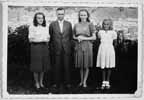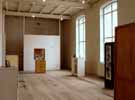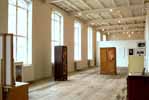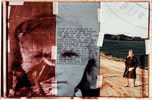Project description • Places of Repose
Places of Repose: Stories of Displacement was inspired by the work that I had done on museum of a man, by a consideration of the dilemmas of the documentary photograph and a personal need to understand my family's immigrant history.
As a first-generation Canadian I realized that I had no history in Toronto, where I had grown up, beyond that of my own memory. The war had completely changed the course of my family's history and severed my generation from its Eastern European roots. The research skills developed working on the earlier story of the amnesiac were applied to exploring the "amnesia" surrounding my family's escape from Latvia in 1944 and their eventual arrival in Canada in the late 1940s via the postwar displaced persons camps of Germany.
The project focused on my grandfather and his three daughters (my mother and aunts), who escaped together from their small farm on the border of Latvia and Lithuania in October, 1944 and followed their journey through war-ravaged Germany to their arrival in the American sector displaced persons camps of Bavaria (southern Germany). The absence of the histories and recollections of non-combatants from WW II influenced my decision to work essentially with the stories of the three women. Places of Repose, the title, refers, to the problem experienced daily by the refugees as to where they would sleep that night as they made their way across Europe.







